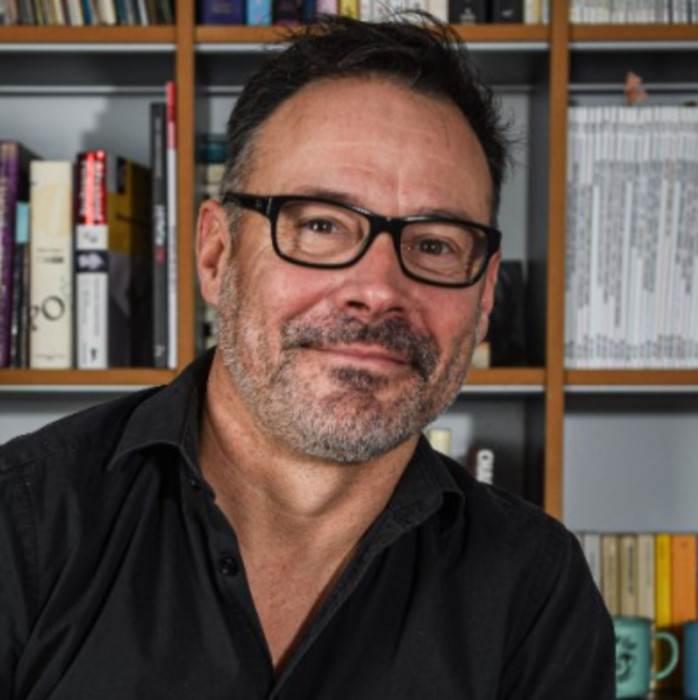
Discover the contemporary work of DARKOÏ

A graphic designer by training (Brassart school), I have always been attracted to all forms of artistic expression, particularly Japanese culture and art. It was then that I discovered the art of gyotaku, an ancestral practice of creating fish prints, and began to study and practice it.
Since my early childhood, my holidays have taken place by the ocean.
On the island of Oléron, I was able to spend my summers looking for marine treasures, share almost miraculous catches with my father aboard a 3 m Zodiac, and familiarize myself with the coastal and marine flora and fauna.
Imbued with this environment, I have never stopped to tirelessly return to the ocean, eventually buying a house 10 years ago in Saint-Denis d'Oléron.
I was then able to get involved and create a real social fabric in order to deepen my knowledge and feed my passion. Collaboration in particular with Sébastien Gas, professional guide and angler, practicing in particular Ikejime (a technique that allows you to kill the fish without making it suffer). Go further than simple fishing, by knowing the animal and its environment better.
This sensitivity to the marine environment extends more generally to the aquatic environment.
Indeed, as a Ligérien since my birth and living in Savonnières (a boatmen's village bordered by the Cher), the river ecosystem is also part of the culture.
But something was missing from this affection for these aquatic environments.
Fishing, exchanges with professionals, ecological actions then found a concrete meaning when I discovered Gyotaku 6 years ago.
After an initial training with Master Marc Porrini, I joined his association "Gyotaku Art Europe" and became, a year ago, vice-president in charge of communication. The practice of Gyotaku perfectly complemented my initial passion, to make it a whole. A complete approach, not only artistic, involving knowledge of the animal, its biotope, while paying homage to nature.
Exhibitions followed, masterclasses, prizes and a wonderful meeting with Master Dwight Hwang. The Gyotaku technique requires a lot of work, rigor and passion. But the exciting exchanges with Masters, professionals and exhibition visitors encourage me more and more.
Gyotaku is a Japanese art that consists of reproducing fish prints on different supports such as paper or fabric. This method was used by fishermen to immortalize their best catches. They could thus prove their worth as fishermen to their peers. On their works, Japanese fishermen also wrote the measurements of their catches, the location of the capture and sometimes added a poem of thanks before affixing their signature. Gyotaku is therefore a way of expressing the respect and gratitude of the fisherman towards the nourishing sea. In this artistic impulse is expressed the satisfaction and pride to have taken an exceptional piece but also the recognition of the generosity of the oceans. The two oldest examples that we know date back to the Edo period and date from 1862.
My gyotakus are made in the purest Japanese tradition. Indian ink, Japanese paper and 5 prints maximum per fish. The prints that I make ARE NOT RETOUCHED, hence the great difficulty of succeeding in to have a beautiful result without artifice. This allows to keep the purity, the truth and the emotion of the print, without cheating. Only the eye is repainted afterwards, in order to "bring back to life" the fish, as tradition dictates.
The prints are mainly made with Indian ink.
Attached to the respect of good traditional techniques, passionate about this art with a simple principle but a demanding technique and requiring complete involvement, I decided to increasingly make these gyotakus with squid ink, which is more delicate to use but brings, in my opinion, even more authenticity, naturalness and truth.
In an ecological concern, all fish (no endangered species, sustainable fishing) are then consumed. No fish is bought or caught EXCEPT to make the gyotaku.
Concerning the fish from the Loire, I have formed a partnership with Romain Gadais, a fisherman de Loire professional in Bréhémont and owner of his restaurant. He warns me when there are good catches, lends me the fish while I make the gyotaku, and I give it back to him afterwards. No waste, no fish caught just to make the gyotaku.
Bringing fish back to life, paying homage to nature.






































































